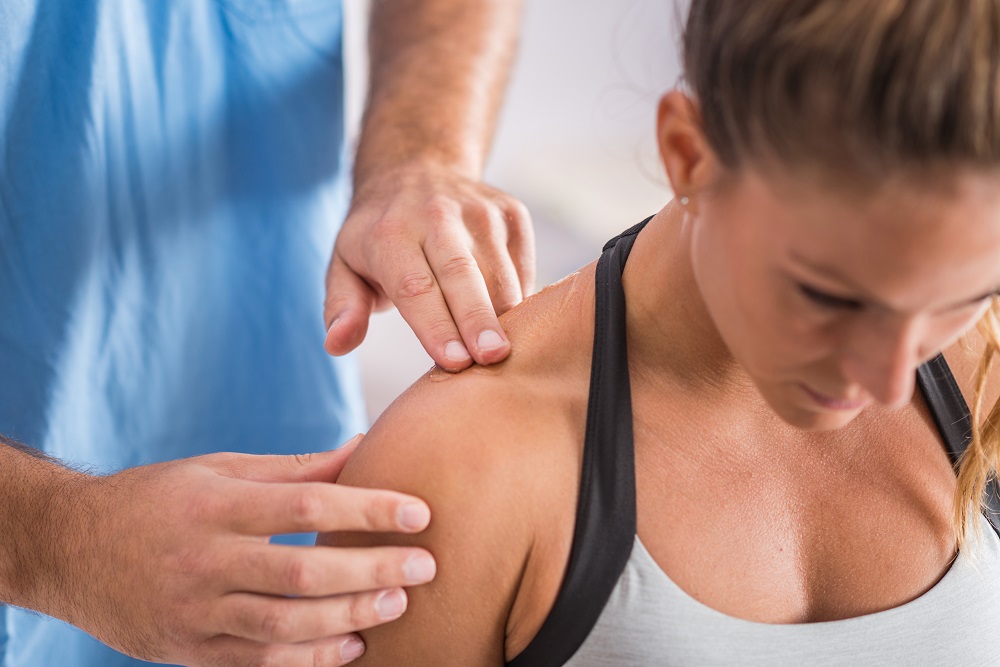by Michelle Padget, PTA, Surprise Clinic
Shoulder surgery encompasses a variety of procedures, from addressing bone spurs and labral tears to repairing tendons and fractures resulting from falls. While your surgeon will provide specific guidelines based on your procedure, physical therapy is often crucial to your recovery journey.
The Path to Shoulder Surgery Recovery
Tailored Protocols
The extent and type of surgery you undergo will influence the protocols you follow. These may range from no restrictions to limitations on overhead movements and gentle stretching. Your physical therapist will discuss these protocols with you, ensuring you understand any limitations and adjustments required. This might involve enlisting support from family or friends for tasks like driving or modifying activities until you regain full mobility, such as opting for button-up shirts until you can comfortably raise your arms overhead.
The Range Before Strength
In shoulder recovery, regaining range of motion (ROM) typically precedes strength training. Here’s why:
- Scar Tissue Management: Scar tissue can form and restrict movement after surgery or injury. Focusing on ROM exercises early helps break down scar tissue and improve flexibility, allowing for better strength training later.
- Pain Management: Gentle ROM exercises are generally less painful than strength training, promoting healing and patient cooperation.
- Joint Mechanics: Improved ROM allows for proper mechanics during strengthening exercises, reducing the risk of further injury.
General protocols for ROM before strength
- Early Phase (Focus on Pain Reduction and Gentle Movement): This might involve passive ROM exercises where a therapist or gentle assistance moves your shoulder joint. Pain management techniques like ice or heat therapy may also be used.
- Progression to Active-Assisted ROM: As pain subsides, you’ll likely move to exercises where you actively participate in the movement with some therapist support.
- Active ROM Exercises: Once you have reasonable control and minimal pain, you’ll transition to exercises where you move your shoulder independently through its full range of motion. These routines evolve into functional tasks such as changing lightbulbs, getting up from chairs, and preparing for daily activities.
The specific timeline for this progression depends on the severity of your injury, surgery type, and healing process. A physical therapist will design a program tailored to your needs and adjust the protocol as you progress.

Return To The Sport
The final phase of therapy involves reintegrating into your preferred sport or activity. Dynamic shoulder movements, such as throwing or catching a ball, are gradually reintroduced. Your physical therapist will prioritize your goals, whether returning to motorcycle riding or rock climbing, tailoring the treatment plan accordingly. Recognizing that every shoulder and surgery is unique, therapists work diligently to help you regain your desired level of function and return to activities you enjoy.
Top 3 Post-Operative Exercises
Sidelying External Rotation (ER)
- Improves external rotation of the shoulder, which can be tight after surgery.
- Increases range of motion.
- It helps prevent stiffness and scar tissue formation.
Supine Flexion with Wand
- It assists with regaining overhead shoulder flexion, which is crucial for many daily activities.
- It provides support for the arm, making the movement more accessible to perform.
- It helps improve shoulder blade control.
Theraband Rows
- Strengthens the upper back and shoulders muscles, which support the shoulder joint.
- It improves posture, which can take pressure off the shoulder.
- The Theraband provides variable resistance, allowing you to progress the exercise as you get stronger.
Shoulder surgery and subsequent therapy can vary widely, with treatment plans tailored to individual needs. Whether your recovery journey involves brief, low-restriction care or intensive treatment, the goal remains consistent: to support you in reclaiming your mobility and enjoying your favorite activities again.
For further guidance on shoulder surgery aftercare, consider consulting with a Foothills Sports Medicine physical therapist in your area!




